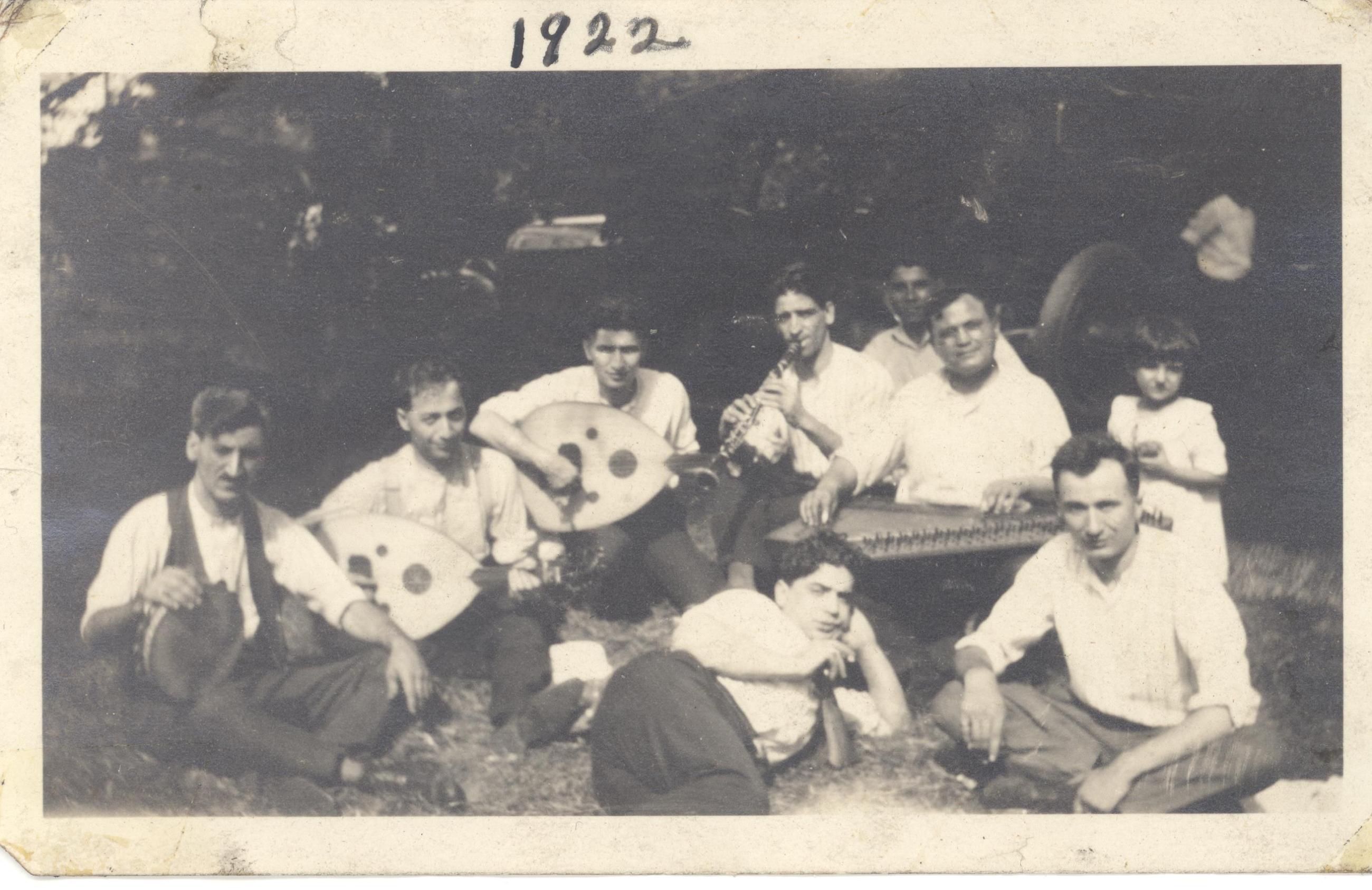
In Detroit, documenting music that lives in minds and memories
On March 16, Knight Arts Challenge winner Ara Topouzian will debut a new documentary on the history of Armenian Music in Detroit, to be shown both on Detroit Public Television and via livestream online. Here, Topouzian talks about the challenges of documenting traditional music.
One of the greatest challenges of creating a documentary on Armenian music is that so much exists only in the minds and memories of the people who play it. The music, from ballads that describe centuries of village life to upbeat songs performed at weddings and dances, wasn’t notated. There is no sheet music. What we know is what we play live for audiences and listen to on recordings. We also most certainly lost music due to the atrocities of the Armenian Genocide of 1915, where 1.5 million Armenians were massacred at the hands of the Ottoman Turkish government.
Armenian musiciains take a break during a picnic at Detroit’s Highliand Park during the 1920s.
Creating Guardians of Music: A History of Armenian Music in Detroit, I had a newfound appreciation and respect for the music and culture I grew up in, something renewed each time I interviewed people and had them tell their story for preservation. It was so important to me to capture their stories on camera, I felt a sense of accomplishment each time I did, as we were preserving history and giving the audience the opportunity to be part of such an important period of Detroit’s history.
Interviewing was not an easy task. In many cases I was interviewing older adults and asking them to relive their youth and tell me their story. Memories had faded, or been erased by disease. Piecing together information became difficult. There was one constant, though, while conducting the interviews: the love for the music and the times in which they listened and played. In some cases, I brought tears to their eyes as they recalled the enjoyment they once had in listening and performing Armenian music. This, they would never forget.
I have special memories from each person I interviewed, but probably most memorable to me was my interview with Art Melkonian. He was the only musician I interviewed that I did not have a previous relationship with. Talking to him in person was a special treat for me. I had always hear of Art, but never met him, nor was I aware of his whereabouts until one of the other musicians, Simon Javizian, informed me that he lived ten minutes from my own house!
In talking to Art, it was amazing to watch his mind as he reflected on the past. You felt the sense of joy and how he still loved the music and missed the “good ole days” of playing for the crowds. He was part of a hit record called the Harem Dance (it was even on the Billboard charts of 1957). Listening to him describe what it was like to play Armenian music to a sea of people at the different venues they played, you felt you were right with him.
Even though the documentary is produced and ready to be aired, I still find myself from time to time reviewing the raw footage from the interviews. I am captivated by the facial expressions, the stories, and their respect of the music. These were not popular musicians playing to sellout crowds. They were average, blue collar, hardworking Armenians playing for fun.
My only regret is that I couldn’t cover every musician that played Armenian music in Detroit. Since many of those musicians performed from the turn of the last century, finding information, photos or even living relatives was very difficult. Since Armenian music isn’t mainstream, one must rely on others to tell their story. This documentary is so much more than about the people I interviewed. It is about anyone who touched an instrument and entertained the Armenian community in Detroit. This is in the memory of the unsung hero of Armenian music that learned music by ear and played for the audiences during their leisure time. Many of them played for free or for tips. They truly loved the music.
There is a concern that Armenian village music may become lost forever in the near future as newer generations listen less to this form of music. That would be a shame and I think we have a duty to teach our youth all we know about folk music – from every culture. Music is a major identifier for our history. Losing it is like burning history books.
Guardians of Music: A History of Armenian Music in Detroit will show at 9:30 p.m. Monday March 16 on Detroit Public Television and online.
Recent Content
-
Artsarticle ·
-
Artsarticle ·
-
Artsarticle ·
